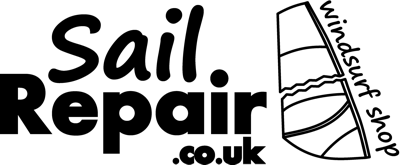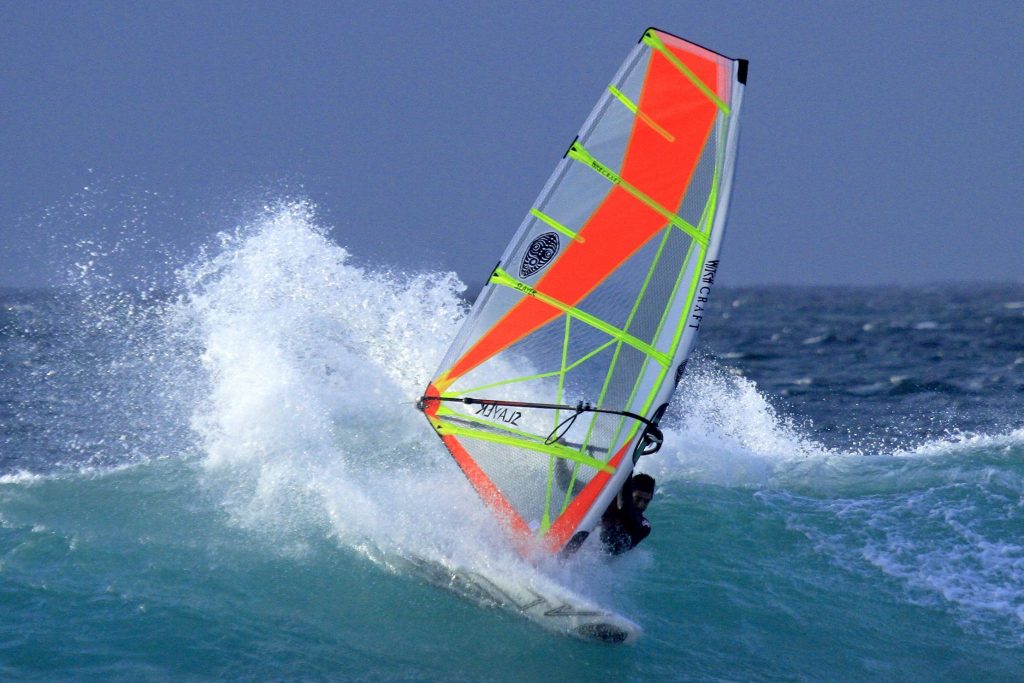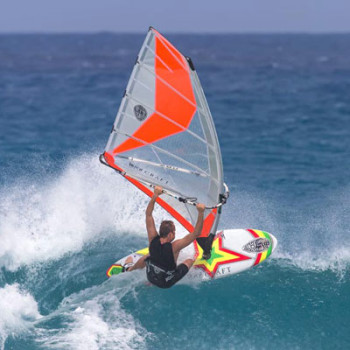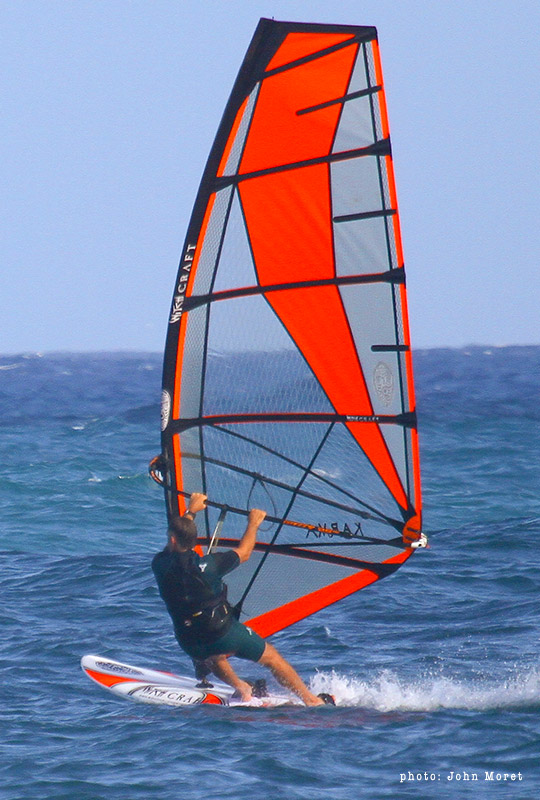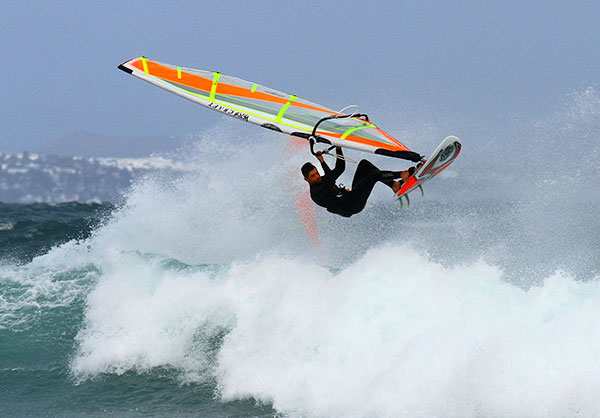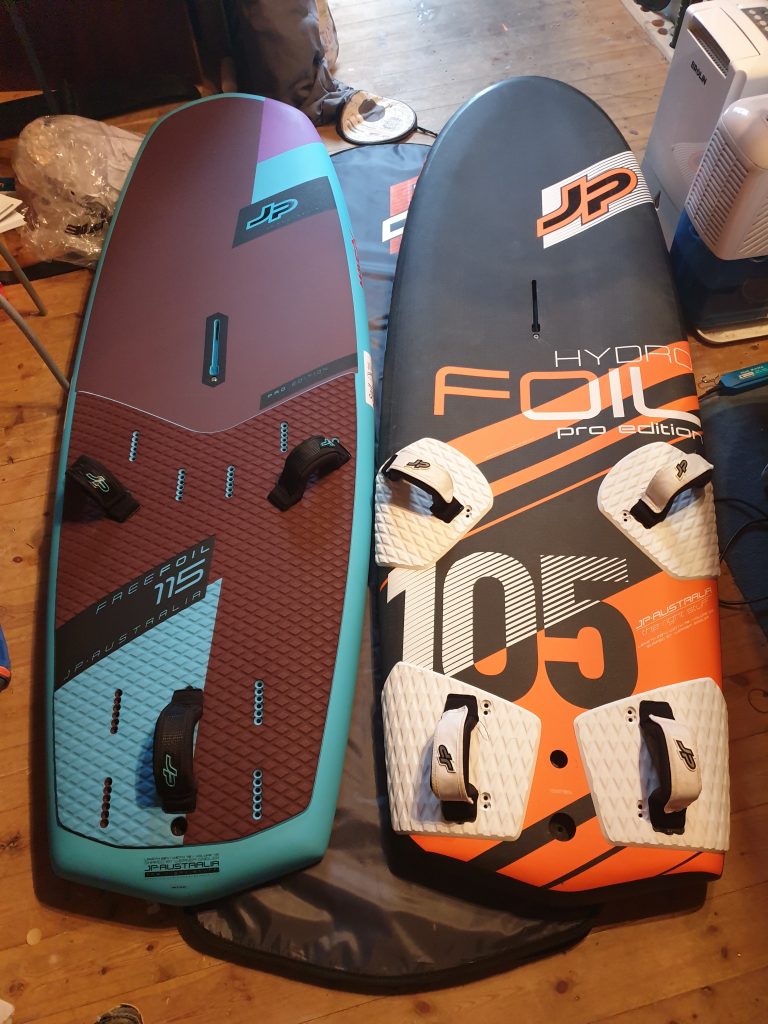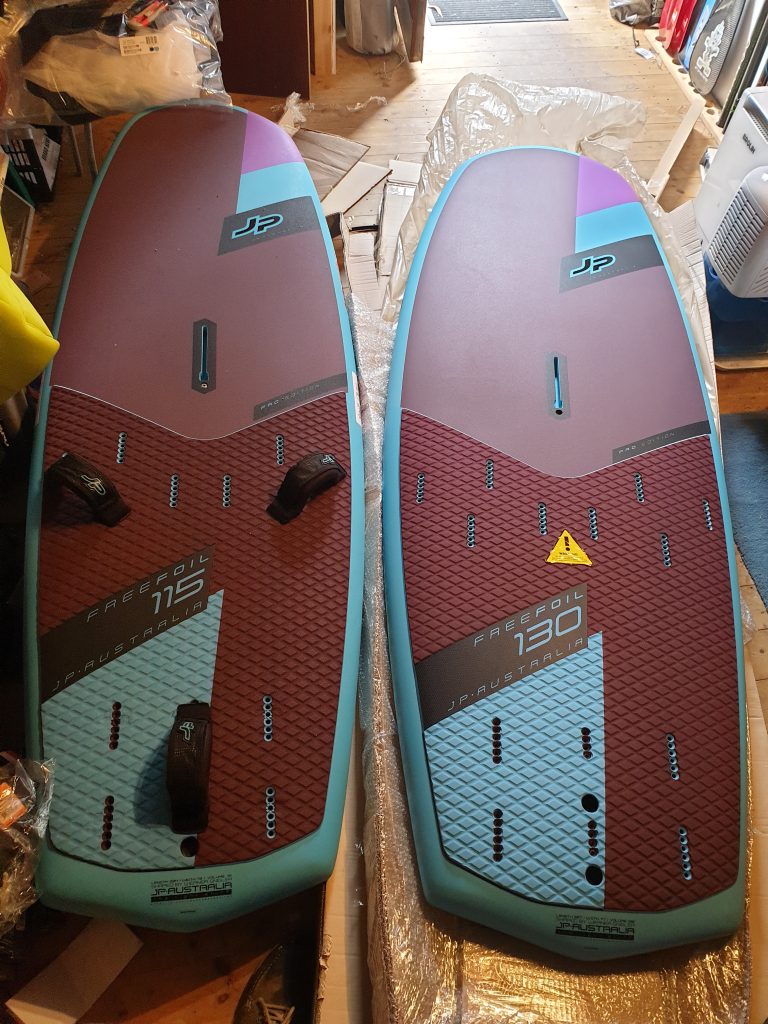Severne Turbo Sails for foiling
Introduction – The Turbo GT is Severne’s 2 cam freerace range and is a popular sail for powering fast freeride boards. It lacks the down force to pin down a dedicated slalom board but more than makes up for this by it’s easy nature. The Turbos sit between the no cam ncx which despite not having any camber inducers actually feels more slalom like than the turbo and the NCX can provide the necessary mast foot pressure to make sure a slalom board behaves itself. On the other side of the Turbo is the Overdrive which is a dedicated blasting sail. It has a wider sleeve, more battens and more cams than the turbo but most importantly it has a much more open leech. To compare the sails the size up in the Overdrive has a similar wind range to that of the Turbo for example a 7.8 Overdrive you can use in the same wind as a 7.0 Turbo.
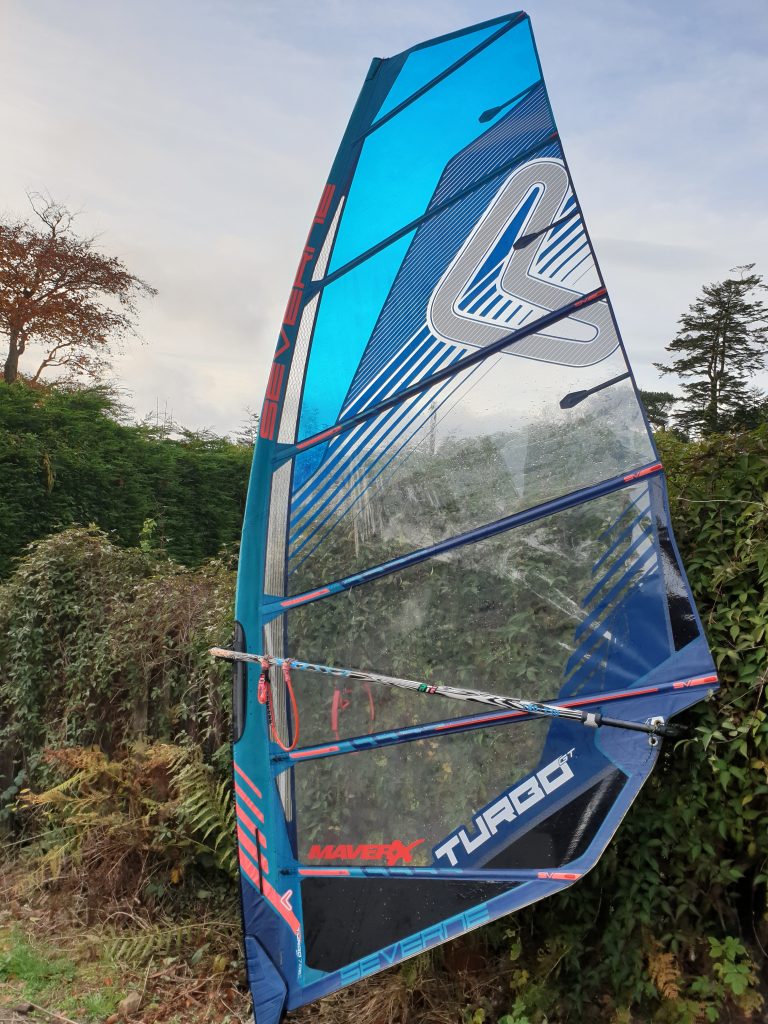
I can’t really start with “first impressions” like I normally do with other bits of kit since I have been using Turbos for a number of years now. So I will simply describe the sails. The Turbos are a bit different compared with most other twin cam sails in that both cams are below the boom. Other sails such as the NP V8 and simmer all have a cam above and below the boom. The result is that the Turbos are probably one of the easiest rotating sails on the market, What is more is that the rotation remains constant across a wide range of downhaul settings this allows you to rig the sails with less downhaul allowing for a tighter leech but maintaining good rotation. This is one of the key factors that makes the Turbos such nice sails to foil with. Up until 2021 the sails from 6.5 downwards had only one cam and 5 battens but the new sails maintain the 6 batten 2 cam layout across all sizes. Other notable points about the sails is that the sails can be rigged on rdm or sdm masts. The 7.0 upwards are supplied with SDM cams and the small sails are supplied with rdm cams. Either type of cam can be purchased as an optional extra and they are easy to change. The cams sit on spacers so fine tuning is straight forward. The sails come with additional spacers although I have to say over the ten or so sails I have used I have not once felt the need to alter the settings of the cams despite using the sails on Maverx masts. Talking of masts the 7.0 is about the biggest sail you can rig on a 430 and likewise the 8.6 actually works better on a 460 than the 490 that is recommended. At this stage I should say that the luff dimensions are often stated. I often find myself rigging the sails with 2 to 4cm less extension than it says on the sails. I tend to look at the mast sleeve as I downhaul the sail. I downhaul until the batten above the boom is just starting to flatten at the mast sleeve. The booms are also relatively compact. While it might be tempting to reduce the outhaul to gain more power I think it is best to keep some outhaul on the sail to maintain a slightly more efficient profile.
On the water – Before you get the sails on the water you may well notice that these sails are light for their size. In use the sails respond well to pumping. There is no need to try to do big pumps, smaller higher frequency pumps tend to work better. The head of the sail should have some spring in it and you want to use that to build momentum in the sail. The result is that you should be able to get flying in a bit less wind than you would with a looser leeched sail. In flight the Turbo will provide a steady power source, feeling light in the hands. When flying through holes in the wind the sail holds its shape and maintains drive. This is where camber inducers have an edge over rotational sails by maintaining drive as the wind pressure drops. In over powered situations the sails can spill power quite easily by sheeting out just a few degrees. When gybing the sails rotate easily and normally do not require any additional pumps of the sail to get the battens to rotate and as such the turbos help maintain flight as you exit the gybe.
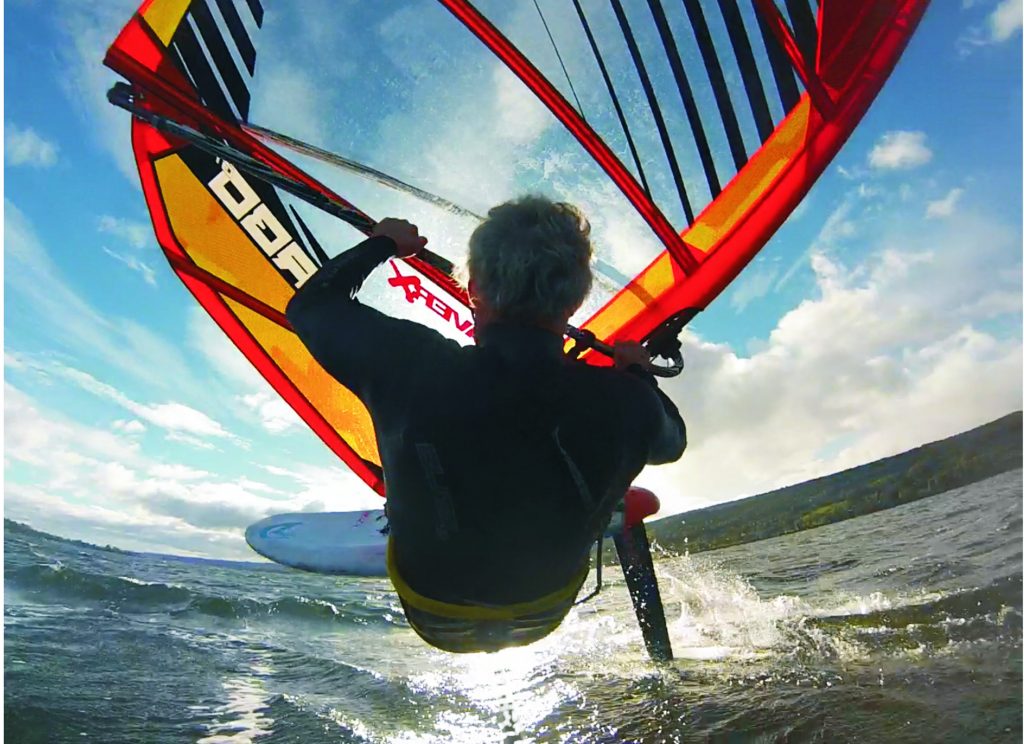
Conclusion – It is as if the Turbos really were designed for real world foiling. They might not fly quite as early as some of the dedicated freeride foil sails but what you get in return is a sail that will cover a wider wind range. The sails are best suited to freeride/freerace style foils boards and will suit foils with low to high aspect wings.
6.5 turbo in action – https://youtu.be/6uWdSjy1lmU
